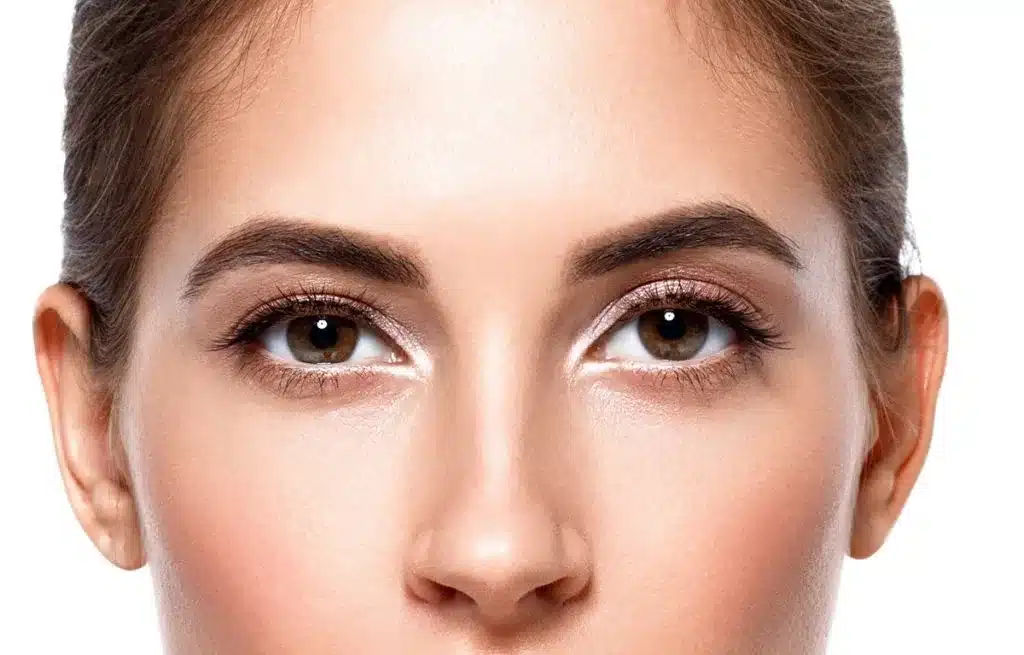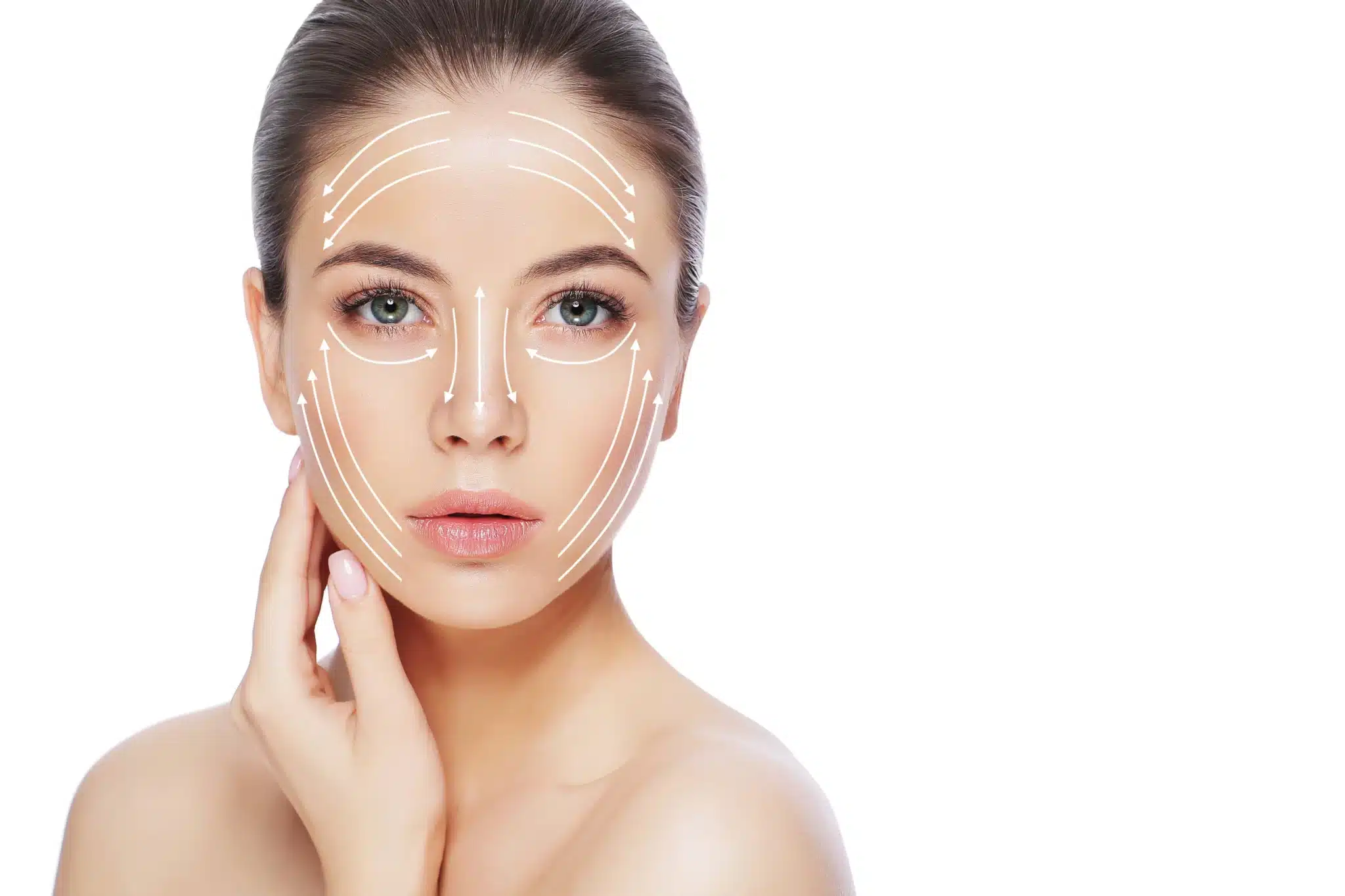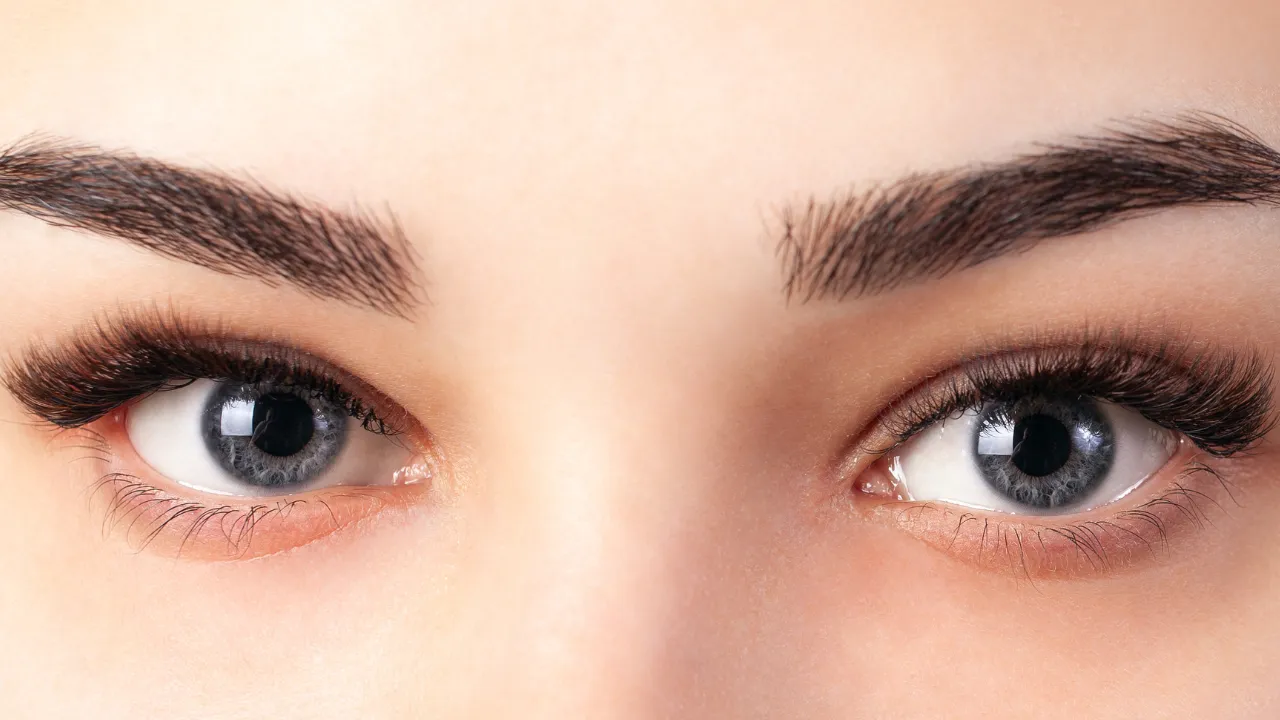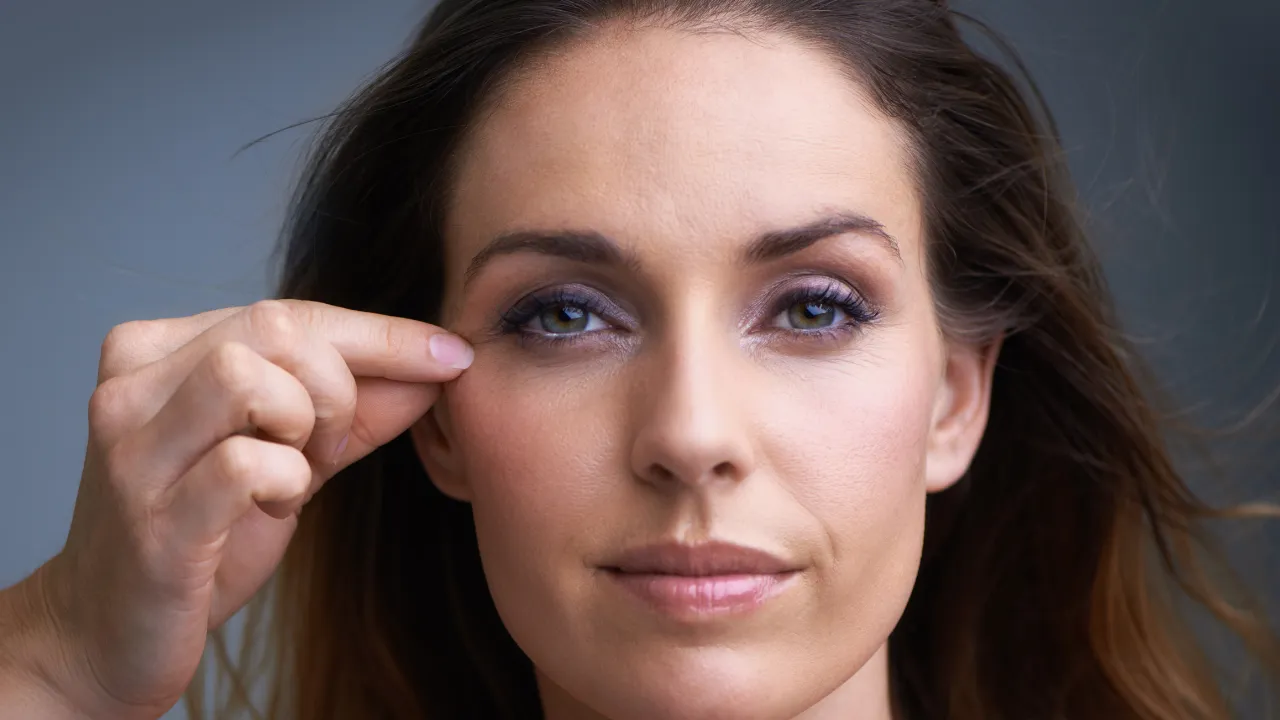Many patients wonder, “why is my right eye lower than my left?” This concern is more common than most realize. At Kopelman Aesthetic Surgery in New York City, Dr. Joel Kopelman, a highly experienced oculoplastic and facial plastic surgeon, helps patients understand and treat facial asymmetry with precision and care.
This article directly addresses that question, covering the causes, diagnosis, and both non-surgical and surgical treatment options.
Table of Contents
ToggleWhy Is My Right Eye So Much Lower Than My Left?
When one eye sits noticeably lower than the other, the cause may involve the eyelid, facial muscles, or underlying bone structure. In many cases, this is due to upper eyelid ptosis, where the eyelid droops because of weakness in the levator muscle, the muscle responsible for lifting the eyelid.
Sometimes, the asymmetry is simply anatomical. In others, it may stem from past trauma, nerve damage, or orbital volume loss. Oculoplastic surgeons like Dr. Kopelman are specially trained to identify whether the cause is muscular, structural, or nerve-related.
Why Did I Wake Up With One Eye Smaller?
Sudden asymmetry that appears overnight often has temporary causes. If you woke up with one eye looking smaller than the other, consider the following explanations:
- Fluid retention from poor sleep posture
- Mild inflammation from allergies
- Fatigue or eye strain
- Minor infection or blocked tear ducts
When to Wait and When to Act
This kind of asymmetry usually resolves within a few hours. However, if symptoms persist or worsen, schedule a consultation. It may indicate an underlying issue that requires medical evaluation.
Is It Normal to Have One Eye Higher Than the Other?
Yes. Slight differences in eye position, eyelid height, or brow shape are very common and often go unnoticed by others.
The medical term for this is eyes asymmetrical, and in most cases, it’s harmless. The human face is rarely perfectly symmetrical. What matters is whether the asymmetry is stable, recent, or getting worse.
One Eye Smaller Than the Other: What It Means
This condition can result from several factors:
- Eyelid ptosis – A drooping upper eyelid
- Enophthalmos – One eye sunken deeper into the socket
- Orbital fat loss – Aging-related volume loss
- Congenital differences – Present from birth
These changes fall under the broader category of eye asymmetry, which includes differences in eyelid height, eyeball position, or socket depth.
Common Appearance Triggers
Sometimes, what looks like one eye smaller than the other is part of mild facial asymmetry, where subtle differences in cheek, brow, or jaw structure create the illusion of uneven eyes. Dr. Kopelman uses advanced imaging to pinpoint the real cause before proposing treatment.
How to Check for Eye Asymmetry at Home
Most people have minor differences between their eyes. If you’re unsure whether your eye asymmetry is significant, try these simple checks:
- Look into a mirror with your face relaxed.
- Compare the height of your eyelid creases.
- Use a straight object (like a pen) to line up both eyes horizontally.
- Take a neutral photo of your face and draw vertical lines through each eye to check alignment.
If the difference seems new or increasing, it may be time for a professional evaluation.
When Are Uneven Eyes a Medical Concern?
Uneven eyes are usually cosmetic, but there are red flags to watch for:
- Sudden drooping of one eyelid
- Recent head trauma
- Vision problems or double vision
- Facial numbness or weakness
If your affected eye feels strained or if your peripheral vision changes, it may indicate a more serious issue. In such cases, a full medical assessment, including eye exams, is essential before considering cosmetic options.
How to Fix Asymmetrical Eyes (Non-Surgical and Surgical)
Treatment depends on the cause and severity of the asymmetry. Many patients do not need surgery. For those who do, procedures are customized and minimally invasive when possible.
Non-Surgical Options
- Botox injections – Used to lift a low eyebrow or adjust uneven muscle pull
- Fillers – Restore lost volume around the eye or cheek
- Topical treatments – Reduce swelling or inflammation
These options work well for mild cases or when fixing uneven eyelids caused by muscle imbalance or aging.
Surgical Options
- Blepharoplasty – Lifts the eyelids for better symmetry
- Brow lift – Corrects brow height imbalance
- Fat grafting – Rebuilds lost volume in the eye socket
Dr. Kopelman personalizes all surgical procedures based on the patient’s anatomical needs and goals.
Can Asymmetric Eyes Surgery Help?
Yes. Asymmetric eyes surgery can restore balance and improve both function and appearance, especially when other options are limited. While perfect symmetric eyes aren’t always achievable, modern techniques aim to create natural-looking balance.
Dr. Kopelman uses precise methods to treat conditions like upper eyelid ptosis while ensuring the results are medically safe and aesthetically pleasing. He explains whether a cosmetic procedure alone is sufficient or whether a functional correction is necessary.
One Eye Is Bigger Than the Other – How to Fix It Naturally
Patients often ask, “why is one of my eyes bigger than the other?” or “can I fix this naturally?” When the difference is mild and not due to a medical condition, the following tips may help:
Home Remedies and Lifestyle Changes
- Sleep on your back with your head elevated
- Use cold compresses to reduce puffiness
- Manage sinus allergies and eye fatigue
- Stay hydrated and reduce salt intake
These steps may help if one eye is bigger than the other because of swelling or temporary inflammation. But if the difference is constant or structural, natural methods won’t fully correct it.
Tips to Prevent Temporary Eye Asymmetry
While some asymmetry is structural, temporary changes are often preventable. These tips can help you reduce swelling or fluid retention around the eyes:
- Sleep on your back with your head slightly elevated.
- Avoid high-salt foods in the evening.
- Manage allergies with appropriate medication.
- Use cold compresses in the morning to reduce puffiness.
- Limit screen time and take regular eye breaks.
These methods are especially useful for people who notice uneven eyes in the morning or after long days.
Frequently Asked Questions (FAQs)
Can uneven eyes be fixed without surgery?
Yes. Mild asymmetry can often be managed with Botox, fillers, or skincare. For long-term structural issues, surgery may offer better results.
Is it common to have one eye higher than the other?
Yes. Facial asymmetry is very common and usually harmless unless it’s a result of trauma or medical conditions.
Do facial exercises help with eye asymmetry?
There’s no strong evidence that facial exercises can correct bone or fat-based asymmetry, but they may improve muscle tone slightly.
Final Notes
If you’re concerned about having two different shaped eyes, one eye larger than the other, or why is one eyeball bigger than the other, know that you’re not alone. These are typical concerns and often have straightforward explanations.
Whether you’re interested in fixing uneven eyes for cosmetic reasons or seeking a solution for functional problems, the first step is accurate diagnosis and professional consultation.
Kopelman Aesthetic Surgery provides expert diagnosis and treatment options tailored to each patient’s face. Whether you’re seeking cosmetic improvement or addressing a functional issue, Dr. Joel Kopelman, a leading oculoplastic surgeon, offers trusted care backed by decades of experience in facial plastic and oculoplastic surgery. Book a consultation today.

























